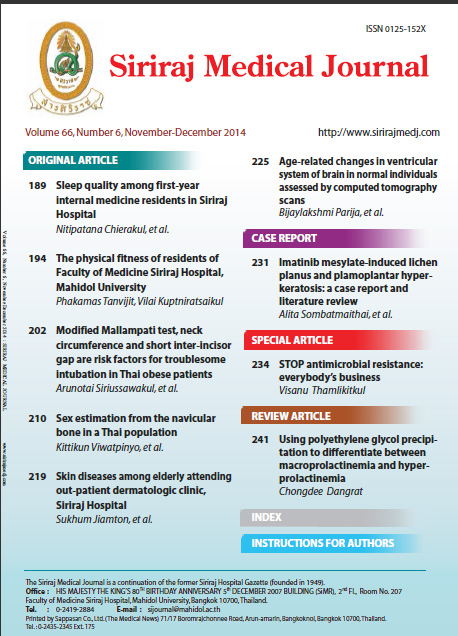Imatinib Mesylate-Induced Lichen Planus and Plamoplantar Hyperkeratosis: A Case Report and Literature Review
Abstract
Imatinibmesylate is a tyrosine kinase inhibitor. Lichenoid reaction due to imatinibmesylate is rare. Most cases have cutaneous lesion with or without mucosal lesion. Mucosal involvement alone was rare. The length of time before the adverse effects appeared after the initiation of the drug ranged from one to six months. There have been few case reports with palmoplantar hyperkeratosis after one to seven months of imatinibmesylate treatment. Nail dystrophy was also present. This presented patient demonstrated cutaneous and mucosal lichenoid lesions as well as plamoplantar hyperkeratosis after taking imatinib for ten weeks. Histopathology was consistent with lichenoid reaction. Therefore it is important to recognize this side effect of imatinib for early diagnosis and treatment.
Keywords: Imatinib, lichenoid reaction, plamoplantar hyperkeratosis
Downloads
Published
How to Cite
Issue
Section
License
Authors who publish with this journal agree to the following conditions:
Copyright Transfer
In submitting a manuscript, the authors acknowledge that the work will become the copyrighted property of Siriraj Medical Journal upon publication.
License
Articles are licensed under a Creative Commons Attribution-NonCommercial-NoDerivatives 4.0 International License (CC BY-NC-ND 4.0). This license allows for the sharing of the work for non-commercial purposes with proper attribution to the authors and the journal. However, it does not permit modifications or the creation of derivative works.
Sharing and Access
Authors are encouraged to share their article on their personal or institutional websites and through other non-commercial platforms. Doing so can increase readership and citations.











